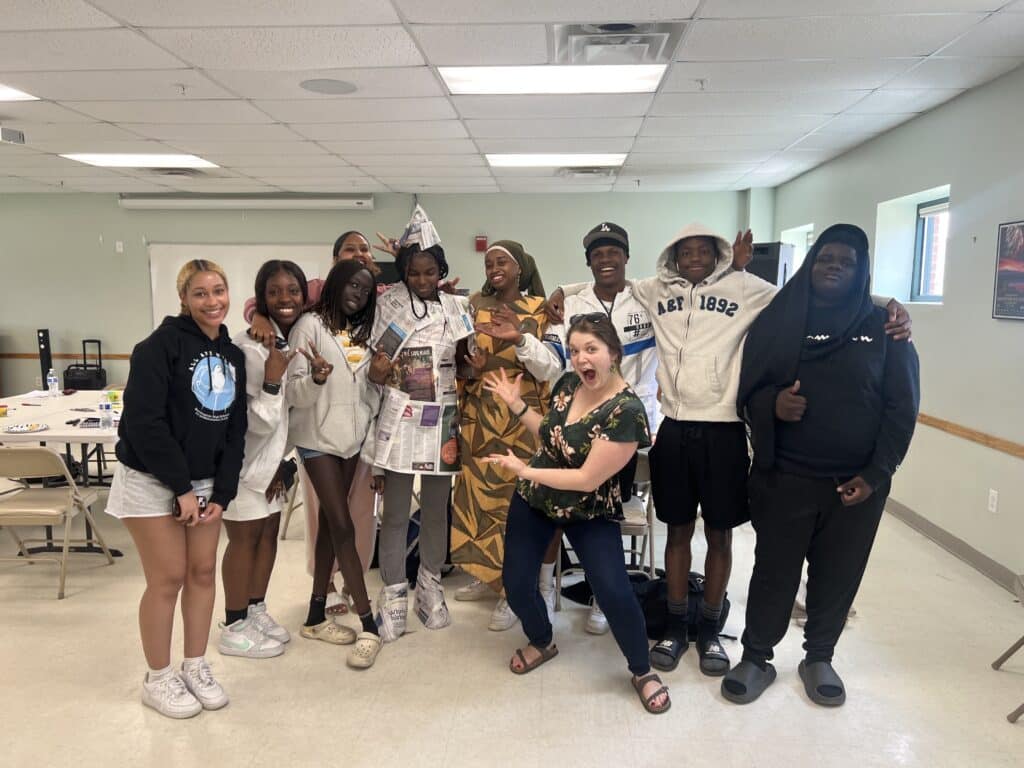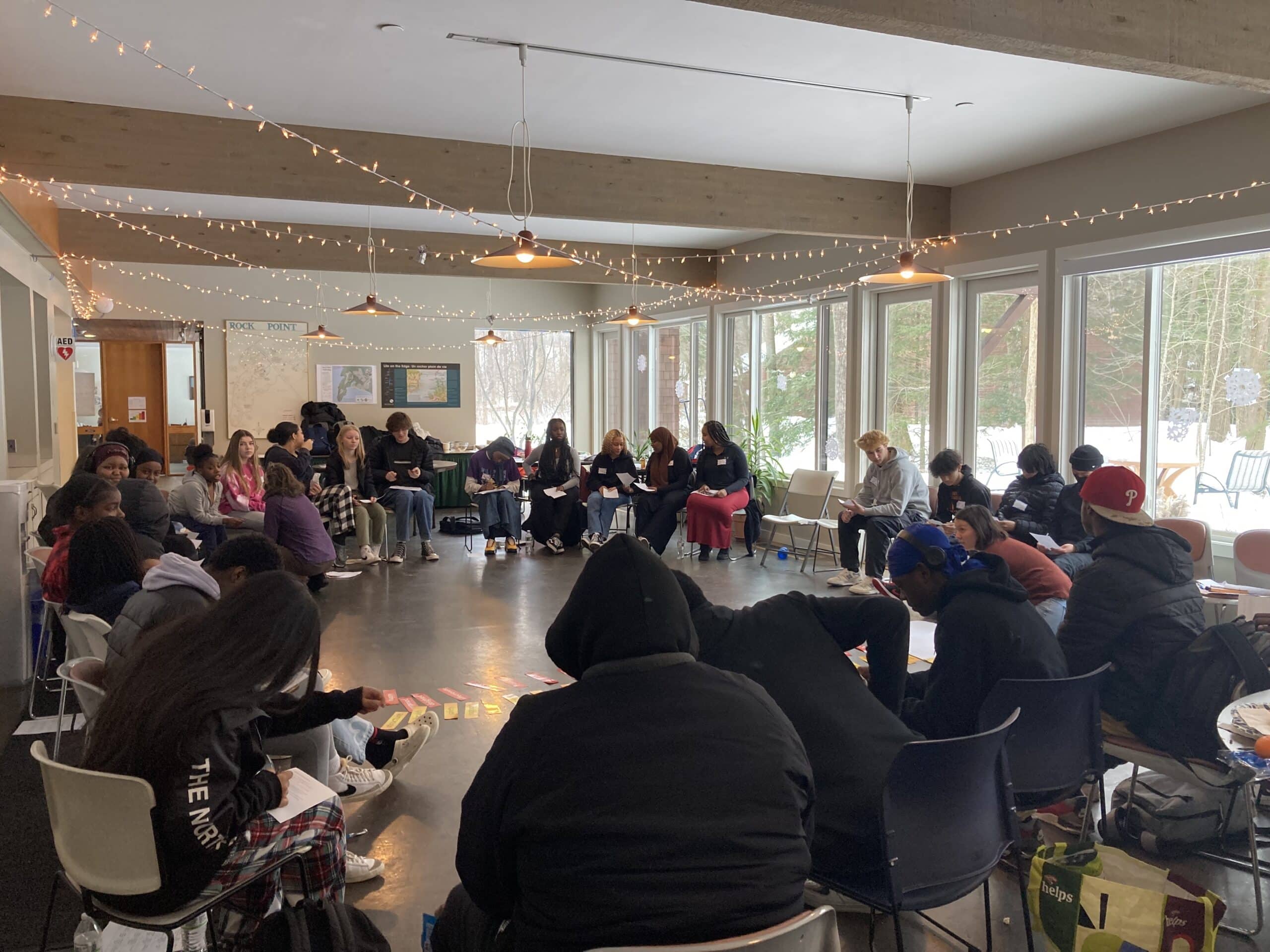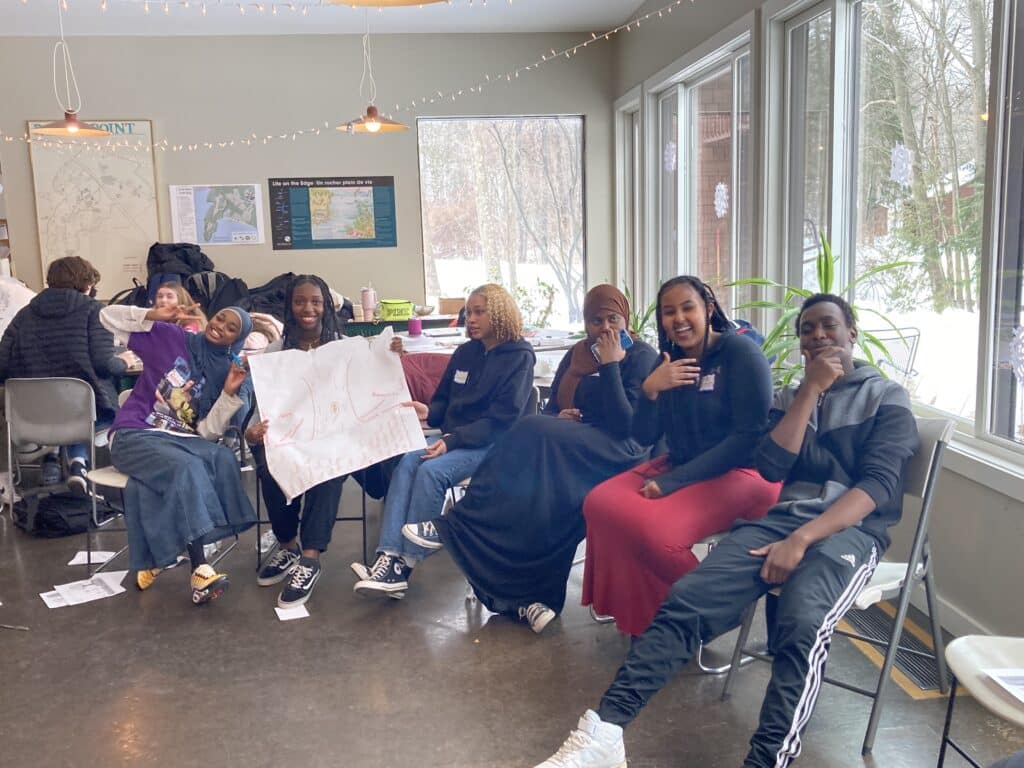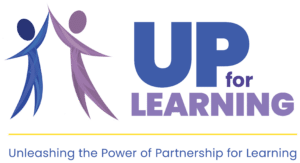 Across the country, many schools are asking the question of how to re-engage students in the classroom. The COVID-19 pandemic has had countless ripple effects, one of which is that many youth no longer feel engaged in their learning. Whether it is family or work responsibilities, or feelings of alienation or isolation, students are choosing not to attend their classes, leading to growing concerns about learning loss and fractured school communities.
Across the country, many schools are asking the question of how to re-engage students in the classroom. The COVID-19 pandemic has had countless ripple effects, one of which is that many youth no longer feel engaged in their learning. Whether it is family or work responsibilities, or feelings of alienation or isolation, students are choosing not to attend their classes, leading to growing concerns about learning loss and fractured school communities.
Burlington High School (BHS) is no different, in that many students are coming to the physical building (temporarily situated in the former Macy’s building downtown, as the new high school is under construction), but are not attending classes, whether an academic course, advisory, or study hall. To address this concern, BHS has partnered with UP for Learning, the Burlington Community Justice Center (BCJC), and the Howard Center, a Burlington-based organization that provides developmental, mental health, and substance use services and support. Working together, we have facilitated several “Engage BHS” retreats, co-facilitated by youth, where we try to get to the root of why students are disengaged with their courses, and how we can reverse that trend. BHS staff recruited about 20 youth to the team, looking for students who have been absent for a certain percentage of classes over this school year. They have designed the project so that participating youth can earn both financial compensation and school credit for their work, as they will be providing valuable insights to the school about student engagement and conducting Youth Participatory Action Research (YPAR).

At the first retreat, held at the Rock Point Center campus of Burlington’s alternative high school programs, we worked on community building, as well as beginning the conversation around what students’ ideal school day would look like. There were wide-ranging discussions of feeling disengaged with their courses, as well as feeling disconnected from teachers and administration. Many students envisioned a school that would allow for more freedom of movement, more relevant course offerings, more quiet spaces, as well as more student input in decision making. Our second retreat focused on leadership styles, with the students taking part in the Compass Points self-assessment, determining whether they consider themselves North (action-oriented), South (people-oriented), West (detail-oriented), or East (big picture-oriented). They also began brainstorming action projects to address concerns.
In the past months, BCJC hosted one of the retreats, where the youth explored restorative practices and how they might be better implemented at BHS. They also explored the unmet needs behind their reluctance to attend class, such as youth feeling that they have already missed a lot of work in a particular course, and not wanting to feel embarrassed when they see their teacher. The Howard Center also hosted a retreat that focused on the central question, “how is the mental health of students, teachers, administrators, and caregivers impacting school engagement?” Exploring this topic through the lens of mental health revealed the many factors at play in disengagement, including stress, depression, and anxiety. During the retreat, the team at the Howard Center presented strategies for addressing mental health struggles on both the individual and community levels.
 Throughout the past months, the team has been developing action projects, tangible ways that they can make change at BHS with the goal of increasing student engagement. They have landed on three focus areas: to develop a consistent break policy for teachers to follow, promote youth and adult accountability to each other, and increase the amount of fun at school. In small groups, the youth have begun the process of collecting data around these topics. For instance, the team focused on establishing a consistent break policy has been reaching out to other schools to learn about their policies. Eleventh grader Augustina Mampuya-Louamba spoke of how visiting South Burlington High School was a highlight of the project, and how she had asked the administrators there questions such as, “Why do you think students take breaks?” and “Do you have a break policy? If so can you tell us more about it?” She said that their conversation lasted over an hour, and that she enjoyed meeting the leaders and learning about how another school works. She appreciates how the project she is working on is “something I picked, and am invested in” and hopes that advocating for a consistent break policy “actually brings an awareness of mental health, and that the students see change” at BHS.
Throughout the past months, the team has been developing action projects, tangible ways that they can make change at BHS with the goal of increasing student engagement. They have landed on three focus areas: to develop a consistent break policy for teachers to follow, promote youth and adult accountability to each other, and increase the amount of fun at school. In small groups, the youth have begun the process of collecting data around these topics. For instance, the team focused on establishing a consistent break policy has been reaching out to other schools to learn about their policies. Eleventh grader Augustina Mampuya-Louamba spoke of how visiting South Burlington High School was a highlight of the project, and how she had asked the administrators there questions such as, “Why do you think students take breaks?” and “Do you have a break policy? If so can you tell us more about it?” She said that their conversation lasted over an hour, and that she enjoyed meeting the leaders and learning about how another school works. She appreciates how the project she is working on is “something I picked, and am invested in” and hopes that advocating for a consistent break policy “actually brings an awareness of mental health, and that the students see change” at BHS.
Ninth grader Gaston Ngoma and eleventh grader Jeabets Kasongo, members of the “fun in school” group, also spoke about their higher level of investment because they had chosen their project. They have been planning a faculty/student basketball game (including a half-time show featuring student dancers!) to be held in the final months of the school year, as well as creating a survey about what other types of fun activities and events youth and adults would like to see in the future. Jeabets said that he has appreciated the “fun activities” of the retreats and “meeting new people” at BHS. He also said that he hoped that the game would be a good memory for this year’s graduating seniors. Tenth grader Nadia Sylla, who is part of the teacher/student accountability group, discussed the work she and her team have put into creating questions for a focus group of five teachers and two administrators, and a survey for students. Some of the questions the team posed are, “How should teachers be held accountable for their words or actions?”, “What are some ways you hold yourself accountable?”, and “Do you think the BHS punishment system for teachers and students is fair?” She said that she was excited to hear “different peoples’ perspectives” and hoped that doing this research would help the school change its policies around what happens when a community member causes harm.
Piloting this project has been a huge learning experience, as it involves many different stakeholders, vulnerable and challenging conversations, and logistics. We are so grateful for the partnership with the BCJC and the Howard Center, as they have provided vital framing for the many issues that prevent students from engaging with their courses. Going forward, this model is one that could be replicated in other schools, provided there is willingness from the adults in the community to deeply listen to their students’ concerns, and to partner with students to make changes that support the engagement of all youth.


One Response
This is an inspiring and encouraging account for the work done at BHS. Another example of UP’s great work and the power of youth adult partnerships.
Nancy Doda